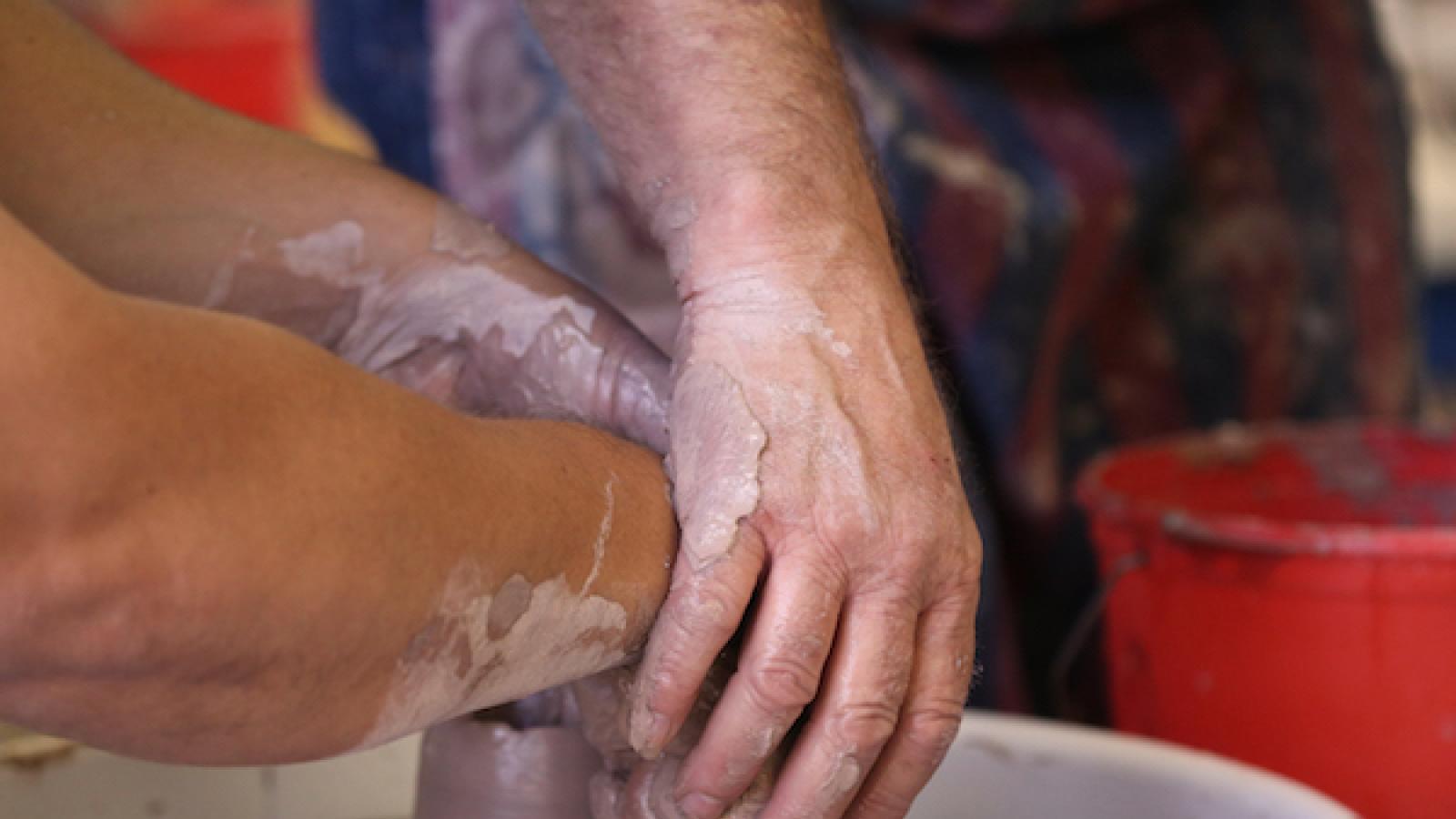Creative Forces: At the Wheel and at the Forge

As director of the Art League’s IMPArt program, which offers free visual arts classes to injured military personnel, Blair Meerfield has seen up close and in person how engaging with the arts can transform an individual. “You sit there and watch people come in without much to say, not interacting with each other,” said Meerfield. “And I enjoy when I see one of those people three of four weeks later, they’re talking. That’s our goal. They can find peace here, growth, safety, camaraderie, and they can experience the arts doing that. It’s that simple for us.”
Based in Alexandria, Virginia, the IMPart classes are not structured with a curriculum or expectations to produce work. They offer instead an opportunity to explore and play in an open studio environment. The idea is to give participants a chance to leave behind what they might be working through in their heads to create something with their hands.
IMPart is the kind of community-based arts program that the NEA and its partners are developing into local art resource networks near each of the 11 clinical sites that are part of Creative Forces: NEA Military Healing Arts Network.
Rich McAfee is an Air Force Master Sergeant E7 who does both ceramics and metal work at IMPart. He looks forward to Wednesdays when he goes to the Arts League studios to create. “But that’s where, you know, Blair and Carla and the people that work, that help out here, they’re fabulous. Because if you’re struggling and they see it, they’ll come over. They won’t do it for you, but they’ll kind of give you a little nudge and get you going back down the road.”
For Captain Jennifer Thurston, the sense of safety she feels while working on her art is all important. “Beyond just learning a new skill and being creative, and having your work inspire you, being around other individuals where you feel like you’re in a safe place; that whatever you’re dealing with is okay.”
What happens in the art studios here at IMPart isn’t clinical creative arts therapy but there are clearly therapeutic benefits for engaging deeply in an arts practice. Shaping a pot on the wheel or making the fine edge of a blade can’t be forced. It must be finessed and coaxed, requiring patience and focus, and tapping into one’s creative reserves. Through these acts of making art, it can be possible to work through wounds in a way that’s different than what happens through medical intervention.
Mike Goodrich, a US Army Sergeant E5 noted, “Pharmaceutical medication isn’t always the best treatment for some things, you know. If my wife was here, she would tell you that there’s a big difference. I’m less irritable after I’ve been here. I’m not focused on my physical limitations as much, the pain kind of subsides when you’re working on something else. She basically kicks me out the door to make sure I show up.”
Over time, one of the goals of the Creative Forces initiative is to grow these opportunities for service members to have hands-on engagement with the arts in their home communities. Beginning on September 27, arts organizations and individuals in each of the communities currently participating in Creative Forces will host a summit to begin forging the links of the local arts network that will serve military personnel transitioning from clinic settings where they have received creative art therapy to art classes and activities in their communities. Those activities will also be available for veterans and their families.
Listen to our Art Works podcast to learn more about IMPArt.




